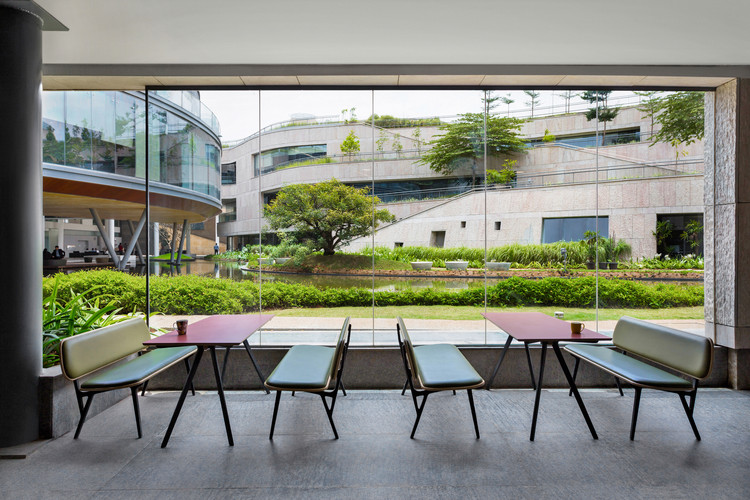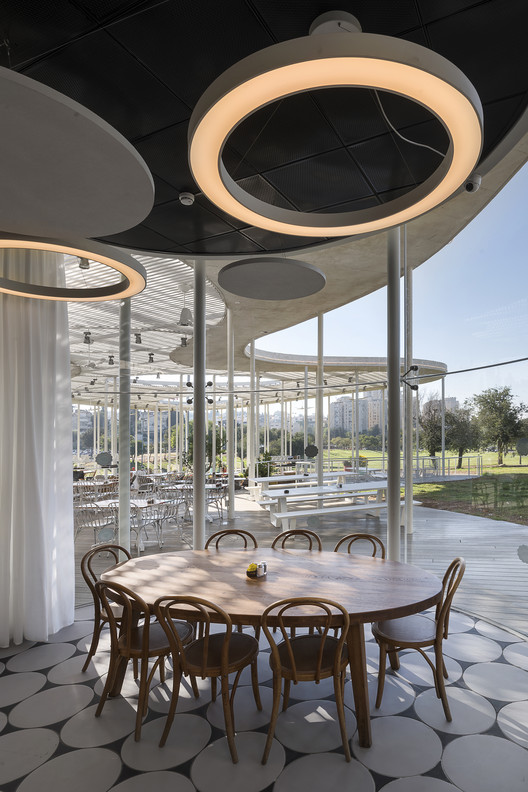Courtyard House NO ARCHITECTURE
2014-08-04 01:00
© Iwan Baan
(Iwan Baan)


架构师提供的文本描述。随着20世纪以传统核心家庭为主导的空间格局的解体,城市的后扩张需要一种新的家庭生活类型。庭院住宅重新构想低密度都市生活,将传统的单一家庭住宅集中在四合院中。
Text description provided by the architects. With the disintegration of the traditional nuclear family as the dominant spatial fix in the Twentieth Century, a new typology for family life is needed for the city post-sprawl. The Courtyard House re-conceives low-density metropolitan living by concentrating the traditional single-family residence into a courtyard house.


通过利用一个边缘地点和缩小1/3的传统房子,庭院之家赞助更多的集体和生态形式的生活,而不牺牲必要的隐私的日常生活。这个新的组织,一个横向的空间星座,不同的个人和集体,同时扩大外部环境和扩大它的社会。在那里,可以在代际家庭和朋友之间建立共同居住活动,同时满足分散的老龄化人口的新需求。
By utilizing a marginal site and downsizing the conventional house by 1/3, the Courtyard House sponsors more collective and ecological forms of life without sacrificing the necessary privacy of daily living. This new organization, a horizontal constellation of spaces, varies from individual to collective, while extending the exterior environment inside and expanding it socially. There, co-habitational activities may be forged between inter-generational families and friends, while fulfilling the new demands of a dispersed aging population.
Ground Floor Plan


与传统住宅不同的是,院落被设计成一个居住的景观,它包含在一个现代主义的楼板中:一个在地板和屋顶平面之间压缩的单级建筑。一个玻璃包装是挫折从屋顶的边缘,以创造一个步行覆盖的露台,激活周围的景观通过物理和社区连接到外面。在室内,房间被设想成一个连续的活动空间序列。每个房间都配备了不同的日常生活性能,由外部框架,表明建筑简单和谐的建筑之间的建筑和植物。
In contrast to a conventional residence, the Courtyard House is programmed as an inhabited landscape contained within a modernist slab: a single level compressed between a floor and roof plane. A glass wrapper is setback from the roof's edge to create a walk-around covered terrace that activates the surrounding landscape by physically and communally connecting inside to out. Inside, the rooms are conceived as a continuous sequence of event spaces. Each room is equipped for the varying performances of daily living, framed by the outside, suggesting an architecture of simplicity and harmony between the built and the vegetal.
© Iwan Baan
(Iwan Baan)


从一个地下车库庭院进入,房子的六个空间在一系列独立的浴室和储藏室的核心周围形成一个连续的循环,这些独立的浴室和储藏室中心聚集并分散,使这些房间可以作为一个单独的阁楼或一系列单独的房间来体验。在最大限度地利用可用空间的同时,每个存储核心包含日常生活、厕所、淋浴、壁橱等的所有要求;允许每个房间在开放或关闭时集体体验。因为没有一个房间像传统住宅那样被隔开和隔离,所以每个房间都可以是白天的生活空间和晚上的睡眠空间。内部的连续周界循环与室外有盖屋顶平台平行。
Entered through an underground garage court, the house's six spaces flow in a continuous loop around a series of separate bathroom and storages cores that flock and disperse to allow the rooms to be experienced as a single loft or as a series of individual rooms. Maximizing usable space while minimizing poché, each storage core contains all of the requirements of daily living, WC, shower, closets, etc; allowing each room to be experienced collectively when open or privately when closed. Because no room is compartmentalized and isolated as in a conventional home, every room can be a living space during the day and a sleeping space at night. Continuous perimeter circulation inside parallels the covered roof terrace outside.
© Iwan Baan
(Iwan Baan)


中央居住空间的框架是一个单一的庭院。为了延续周围的土著景观,庭院被设想成一个空间分隔器,就像一个家庭营地,以巩固和分担日常生活的欢乐和负担,而不会在夜间感到过于拥挤。庭院被挖掘,以优化景观和被动太阳能增益,允许光和空气在里面,同时把房子沉入山坡,以最大限度地隔热和与城市环境的亲密关系。
Framing the central living spaces is a single courtyard. Planted to continue the surrounding indigenous landscape, the courtyard is conceived as a spatial divider, like a family camp, to consolidate and share the conviviality and burdens of daily living without feeling overcrowded at night. The courtyard is excavated in plan to optimize views and passive solar gain, allowing light and air inside, while sinking the house into the hillside to maximize thermal insulation and intimacy from the urban context.
© Michael Weber
迈克尔·韦伯












































Architects NO ARCHITECTURE
Location Aurora, United States
Category Houses
Architect in Charge Andrew Heid
Project Team Christopher Purpura, Jack Hogan, Noa Peer
Project Year 2013
Photographs Iwan Baan, Michael Weber, NOA
























